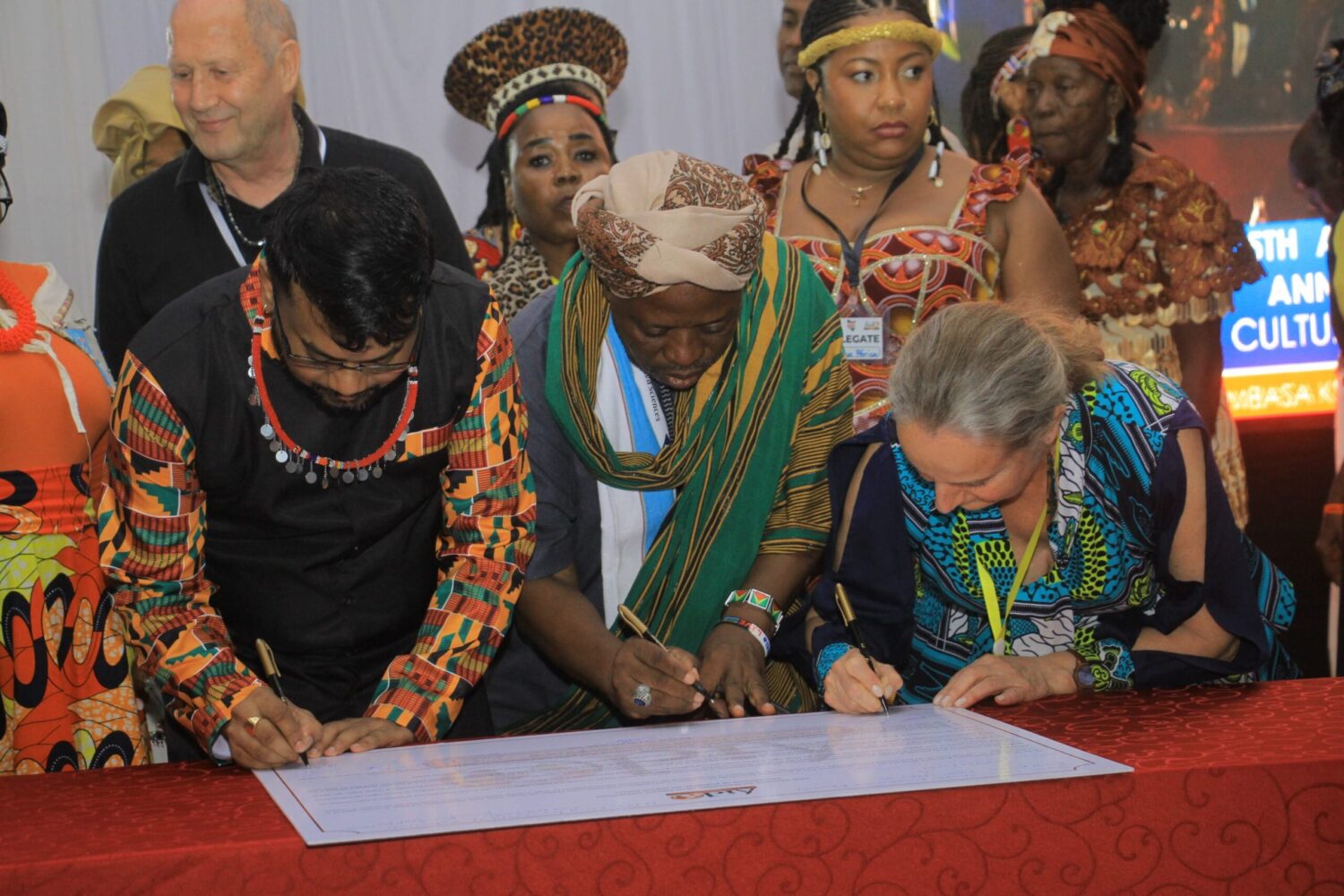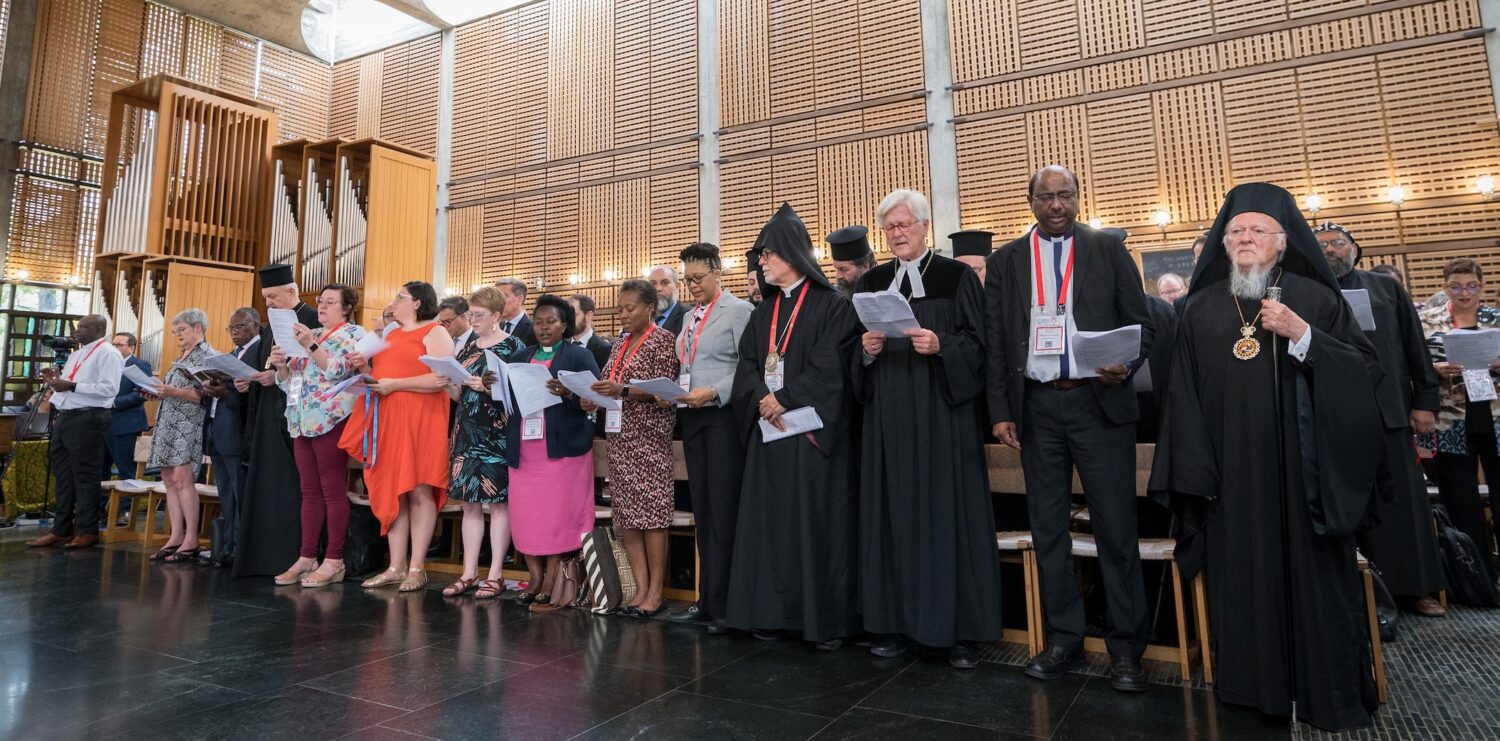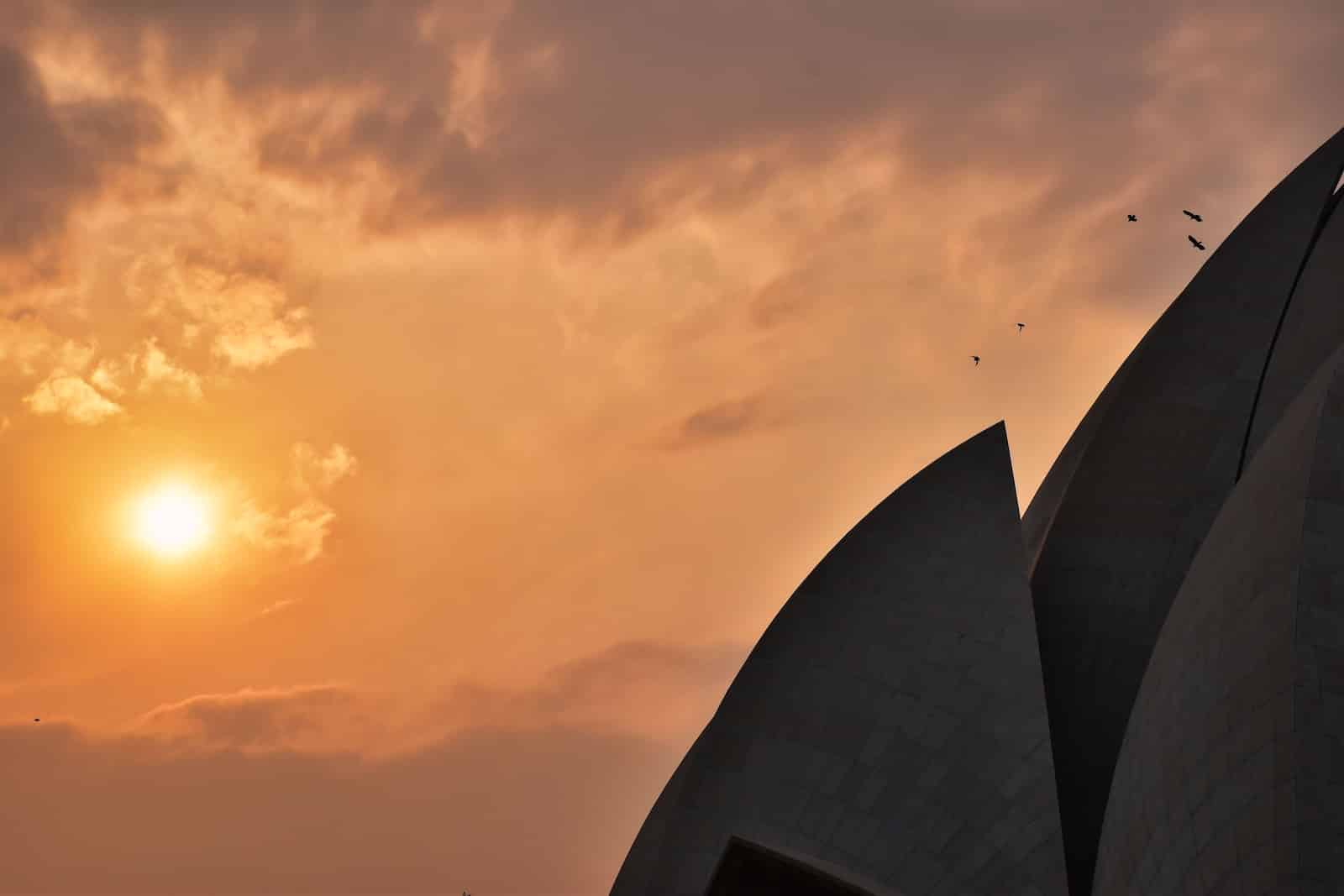PRESS RELEASE – Mombasa / AIDO Network International, with its head office in London and chapters in Europe, Africa, and the Americas held its 5th International Convention in Mombasa, Kenya. Human rights issues were at the top of the agenda. Culminating in the historic Declaration of Mombasa on Human Rights, the conference raised important issues in the context of traditional African culture and how the continent can grow.
The Declaration was signed by African traditional leaders, government officials and civil society representatives from around the world and affirms their commitment to work together for equality, justice and respect for the human rights of African people.
The Convention was organized in collaboration with the African Indigenous Governance Council (AIGC) and the CARICOM Reparations Commission (CRC).
Implementation and Respect of Human Rights
The Declaration calls for the full enjoyment and full complement of human rights by African peoples everywhere and calls for African governments, Traditional and Cultural Leaders, to give full support and consistent advocacy for reparatory justice for Africans in the diaspora and on the continent bearing in mind the 400 years of illegal trafficking in the trans-Atlantic trade in enslaved Africans and the disruption of social, political and economic structures in Africa; and colonialism, in keeping with the CARICOM Reparations Commission’s Ten Point Plan for Reparatory Justice.
The high-level gathering further resolved:
“to build a united global Africa that is committed to the development and advancement of African people everywhere; our intention to facilitate the return and reunification of Africans in the diaspora with their roots, by advancing a progressive reconnection agenda with emphasis on spirituality, cultural education and exchange, business and investment; and our unequivocal support for reparatory justice for Africans in the Diaspora and in Africa for the crimes against humanity and denial of their human rights.”
The Convention which focused on “Culture, Ubuntu and Human Rights,” featured a business forum and business roundtable discussion; a human rights summit with panel presentations on human rights and reparatory justice, a cultural panel along with many displays of African song, dance and costume, all facilitating a dialogue between African royals and attendees from around the world.
His Royal Highness Paul Jones Eganda, Global President of AIDO Network International, in his opening address recognized that “the promotion and protection of human rights require not only national efforts but also international cooperation. We understand that no single nation or entity can fulfill this vital task alone.”
He further emphasized that “it is by joining forces, sharing knowledge, and fostering a dialogue that we can address the challenges faced by humanity and ensure that human rights are realized in every corner of the world.” He concluded by encouraging those in attendance to ensure that the Convention serves as a milestone in our collective journey towards a world where human rights are not just lofty ideals but lived realities.
Princess Ulrike Pohlman Acom, Chairperson of AIDO’s Advisory Board, welcomed the delegates to the Convention and thanked the AIDO Kenya Chapter – headed by Ms. Ann Hamburger and supported by the Hon Millicent Odhiambo – for their hard work on the arrangements and programme of the Convention which was to “create a better world with all the different recourses every individual has, in the spirit of UBUNTU.”
The keynote address was delivered by Dr Hilary Brown, Programme Manager of Culture and Community Development, CARICOM Secretariat, representing Professor Sir Hilary Beckles, Chairman of the CARICOM Reparations Commission.
She highlighted the brutality of chattel slavery in the Americas, the negation of the human rights of Africans, the ideology of racism and the debt that “has not yet been paid for systemic exploitation, extraction of wealth, pain, suffering and psychological harm, leading to persistent poverty in the Caribbean and in Africa up until today,” as the basis for the establishment of the CARICOM Reparations Commission in 2013 and its consistent call for reparatory justice from Europe. She also highlighted the critical role that African traditional leaders should play in fostering a united global Africa and called upon the influential gathering to speak with one voice to advance Africa’s development.
Mombasa Key Panel Discussions
The Business Panel chaired by Prince Bimbo Roberts Folayan, Advisory Board member and head of AIDO Business explored the theme: ‘Promoting Business and Investment Opportunities within Africa and her Diaspora’. The panellists held a lively discussion and concluded the need to develop more ways to improve intra-Africa – Diaspora trade collaboration and how AIDO would work with other organizations towards this end.
The Human Rights Panel was chaired by Mr Martin Weightman, Human Rights and Interfaith Advisor for AIDO and addressed the specific issue of Women and Children’s rights. The panellists discussed how traditional roles could enhance these rights whilst also taking a critical look at practices that should be discarded such as female genital mutilation.
This discussion formed the basis for an ongoing programme and action plan that will be developed to also include other relevant areas such as modern-day slavery. A number of new groups were also formed as part of the Youth for Human Rights education campaign that was highlighted during the Congress.
The Culture Panel chaired by Ambassador Filda Lolem explored AIDOs charity work in different countries and highlighted how culture can be used as a tool that crosses into so many social areas and should be used to facilitate and promote coexistence, the implementation of human rights education and action, businesses and tourism. The entire Congress was punctuated by vivid and colourful presentations from different areas of Kenya.
The Convention also received a message of solidarity from the African Union, sent by H.E. Ambassador Minata Samate Cessouma, AU’s Commissioner for Health, Humanitarian Affairs and Social Development, which was read by His Majesty Dr. Robinson Tanyi, King of the Tinto Mbuo region, Cameroon and President of AIGC.
Among the officials who also welcomed the delegates to the Convention were His Royal Highness Paul Sande Emolot Papa Emorimor III, King of Ateker Iteso, East Africa; His Majesty Nabongo Peter Mumia II, King of Wanga Kingdom, Kenya; the Hon. Onyiego Silvanus Osoro MP and Majority Chief Whip; Ms Anne Mwita, Ministry of Foreign Affairs and Mr Mahmood Noor, representing H.E Abdulswamad Shariff Nasssir, Governor of Mombasa.
In conclusion, the Convention has laid the groundwork for AIDO’s activities to be taken to a new level of cooperation and development in the coming year.














